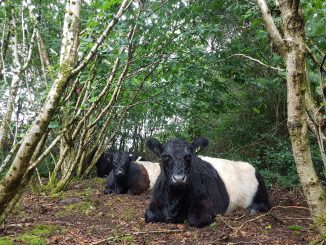Harvest 2020 is the agri-business and government plan for rapid expansion in the dairy and beef sectors in Ireland. Since the recession started in 2007, agri-environmental and rural development initiatives have been severely cut. At the same time, the organic sector is tiny – less than 2% of the land area is certified organic – and it is barely growing.

On face value, the leaders of agri-business and government are all singing from the same hymn sheet in Ireland – let’s reward productive farmers. This emphasises business-as-usual and aims to harness payments for the wealthier farmers with the best land in current CAP negotiations.
Dairy in particular is emphasised, with global demand predicted by some to grow by 2.7% per year for the next ten years. Growth plans are stronger for dairy than other sectors, with the ending of quotas – artificial barriers to expansion imposed by EU rules – coming in 2015. The proposed dairy increase is of 50% by 2020, and progress is ahead of target.
In all of this, the smaller farmer, who, by an accident of birth, ends up in more remote places with poorer land, suffers. It is rare for the debate about CAP to leave the farming pages in Ireland, as it is such a specialised area. On occasion when it does, the debate is often laid out in clear, stark terms.
Fintan O Toole, writing in the Irish Times last October, pointed out that if the basic EU Commission plan for flat rate, per hectare payments in the CAP reform was adopted, a majority of farmers in Ireland would actually benefit.
“What’s not to like? The problem is that the changes will redistribute income away from the big ranches to family farms, and away from Leinster and Munster towards Connacht and Ulster” O Toole said.
His source? A paper by the Director of Ireland’s agricultural research agency, Professor Gerry Boyle of Teagasc. O’ Toole’s interpretation of this when compared to Boyle’s intention is interesting. For O’ Toole, there is an issue of basic equity – farmers in the geographically, economically and historically poorer west of Ireland would benefit massively. For Boyle, however, this sort of move would have “very serious implications”; indeed he states “it is very difficult to see what could be attractive about such a model.”
A curious old divide has emerged too in this muted debate about CAP reform. Unlike the current party of government, Fine Gael, Fianna Fail, the party of government for most of Ireland’s independent existence as a country, were long considered the party of the small farmer. This notion mostly disappeared in the boom economic years of the 1990s and 2000’s, when agriculture was considered something of a twilight industry.
Now, Fianna Fail’s agriculture spokesperson, Eamon O Cuiv, has started to make soundings on behalf of the small farmer. He has argued for the protection of Pillar II payments, a cap of €50,000-60,000 on the total amount that any farmer could receive in a Single Farm Payment (SFP), and new maximum and minimum amounts payable per hectare. Pressure on O Cuiv has been strong, with delegations of the largest farmer organisation, the IFA, and the Department of agriculture meeting him to lobby him to desist.
Concurrently, a lobby group for small farmers was relaunched in May 2012.
Where all this will lead to is unclear: culturally and over time, larger, wealthier farmers have dominated the discourse. And with Fine Gael in power in Ireland during the CAP negotiations, this is likely to continue.





